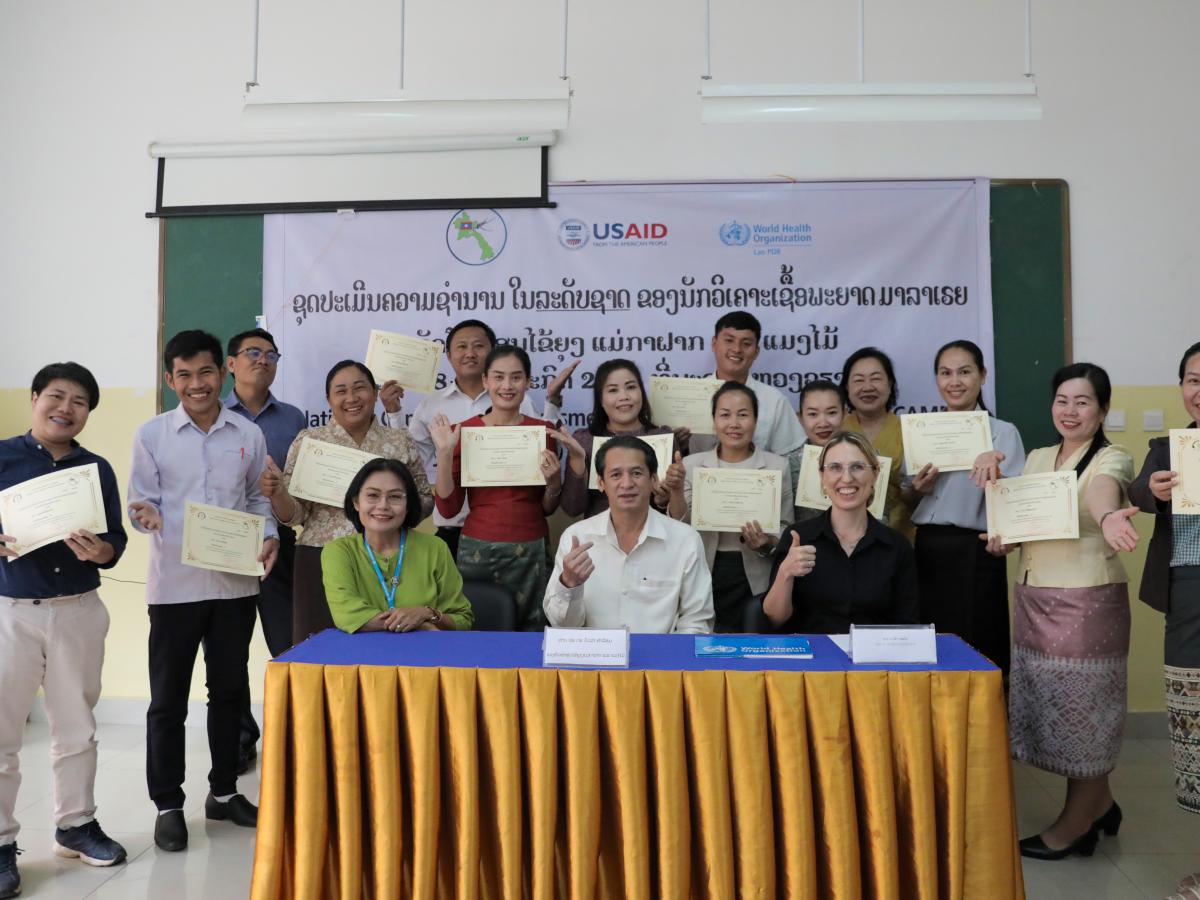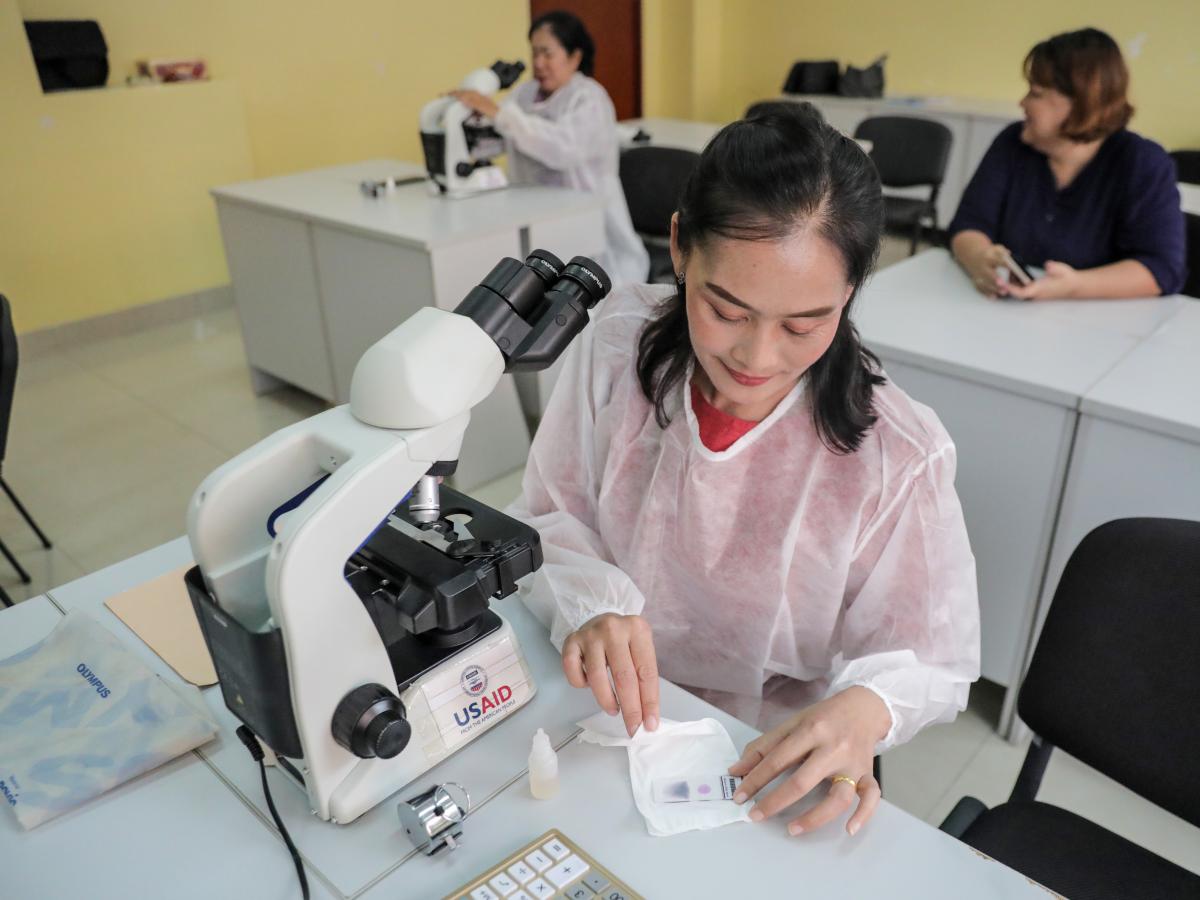Malaria once cast a long shadow over Lao PDR. In 1997, an estimated 462,000 people were infected with significant economic and social impacts.
Education and employment were disrupted, and countless lives were lost. The disease's grip extended far beyond the initial illness, with long-term health consequences a heavy burden on communities.
However, a dramatic shift has occurred. Thanks to accelerated strategies implemented by the National Malaria Control and Elimination Program, Ministry of Health and its partners, including the World Health Organization and United States Agency for International Development (USAID), malaria cases have dropped by over 90 percent over the past decade, with just 809 cases in 2023. The nation is now on the brink of eliminating Plasmodium falciparum, the deadliest malaria parasite, by the end of 2025.
While many unsung heroes play crucial roles behind the scenes, including at the community level, a key group is laboratory technicians (microscopists). These dedicated individuals are the eyes on the ground, detecting, tracking, and monitoring malaria cases in high-risk areas.
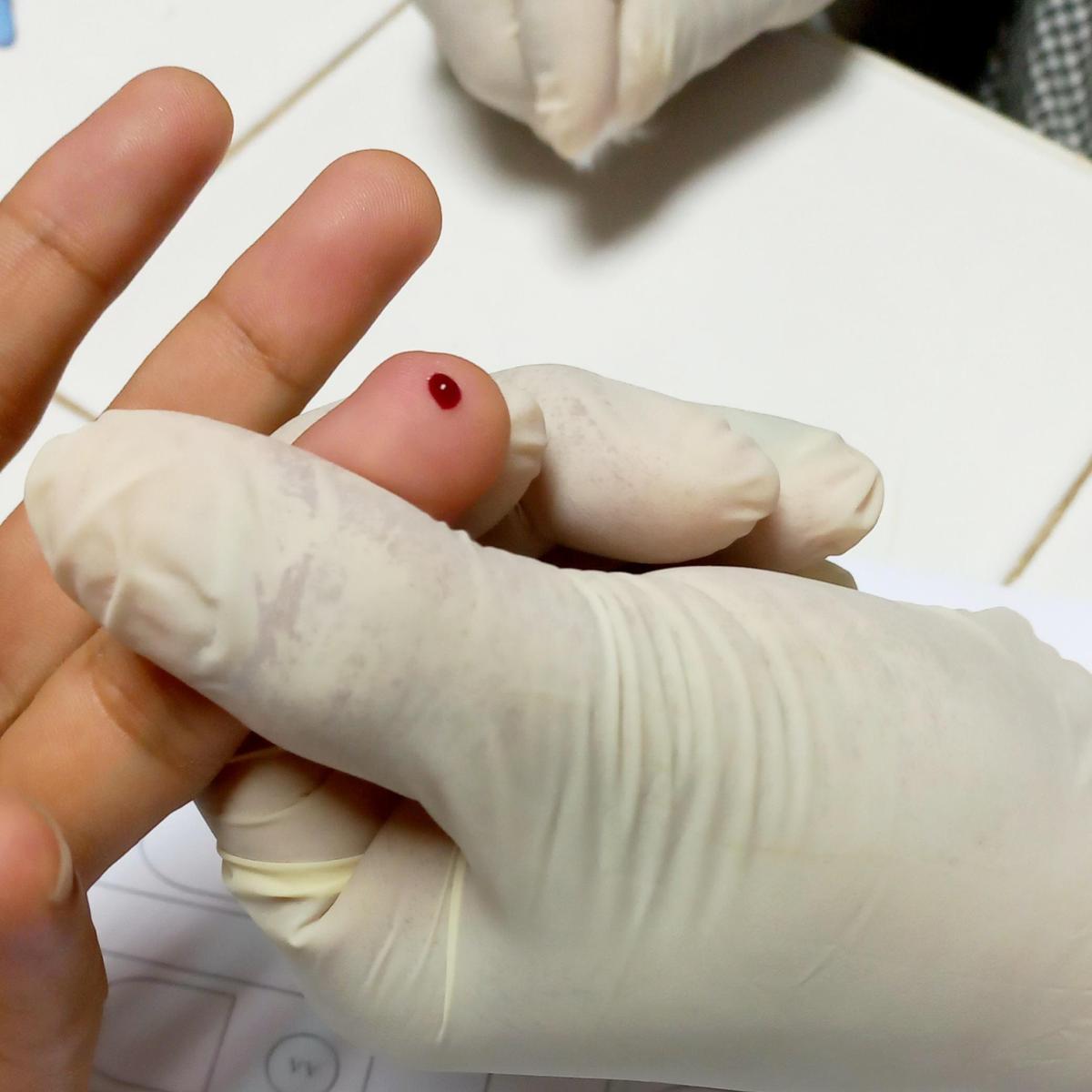
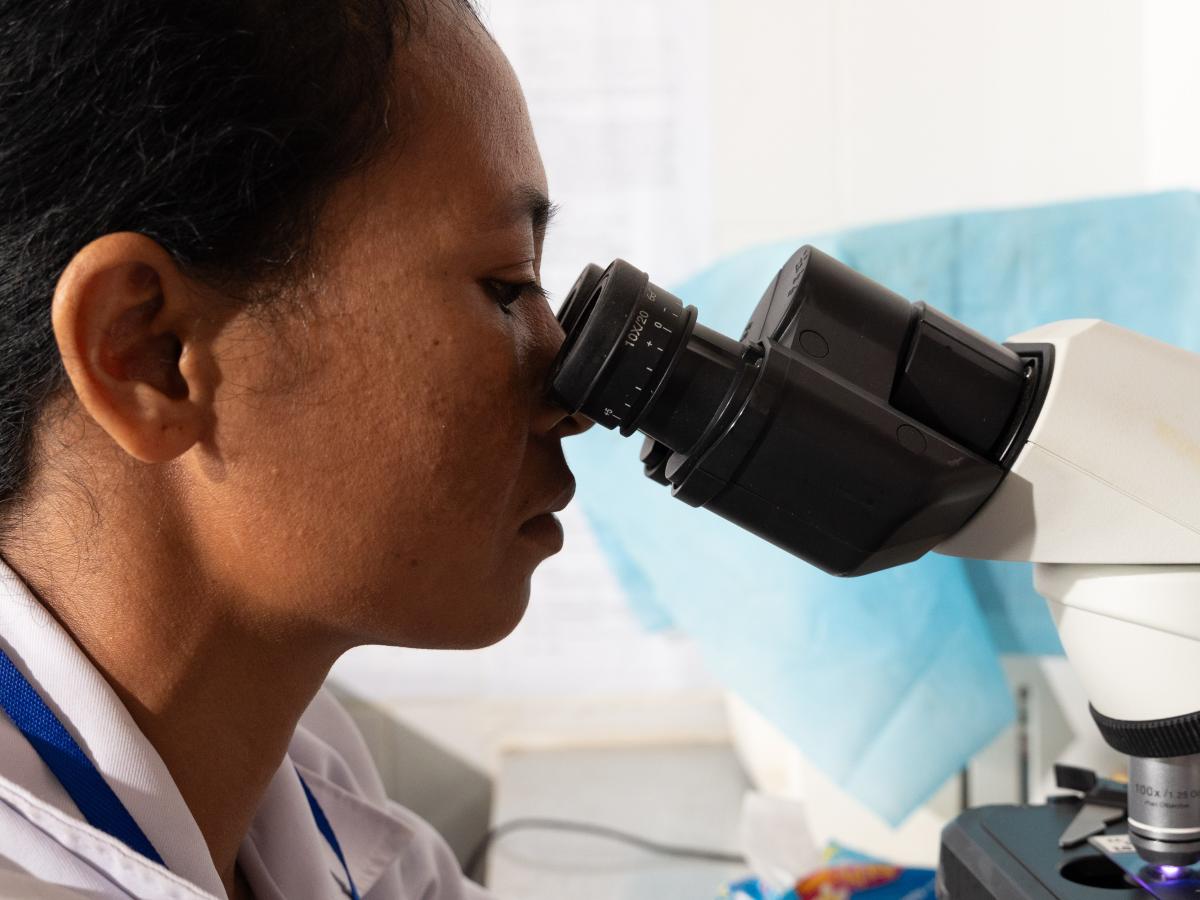
Equipped with expertise, training and quality assurance by WHO, with USAID support through the U.S. President’s Malaria Initiative (PMI), alongside operational funding, tools and diagnosis equipment (including USAID-donated microscopes), are instrumental in the fight for a malaria-free Lao PDR, and ensuring the final steps towards elimination.
Over the past decade, USAID has provided technical assistance, supplied equipment, and distributed more than 1 million mosquito nets, nearly 1 million malaria diagnostic test kits, and anti-malarial drugs bringing the combined total amount of commodities at USD $5.4 million.
Somphan Sorvalin, a 35-year-old microscopist at Xanxay District Hospital in Attapeu Province, embodies the commitment of these frontline workers. Her days are filled with attention to detail as she examines blood samples, searching for malaria parasites.
Primary TextFirst, we collect blood samples and interview the patient," Somphan explains. "We ask about their symptoms, recent travels, and exposure to forested areas. This information is crucial for understanding the spread of malaria
While rapid tests are valuable tools, Somphan emphasizes the importance of microscopic examination – considered by WHO to be the “gold standard” for malaria diagnosis, and an important skill for every country’s health workforce to maintain for malaria elimination, and broader health security efforts.
Sometimes, a patient's history or symptoms raise concerns, making me question the accuracy of the rapid test," she says. "In these cases, a microscope provides a definitive diagnosis."
Somphan's dedication is fuelled by a deep sense of purpose. "If people are sick [with malaria] they face a significant economic burden," she explains. "I am proud to be a technician so that I can take care of people – I want to eliminate malaria in Lao PDR.”

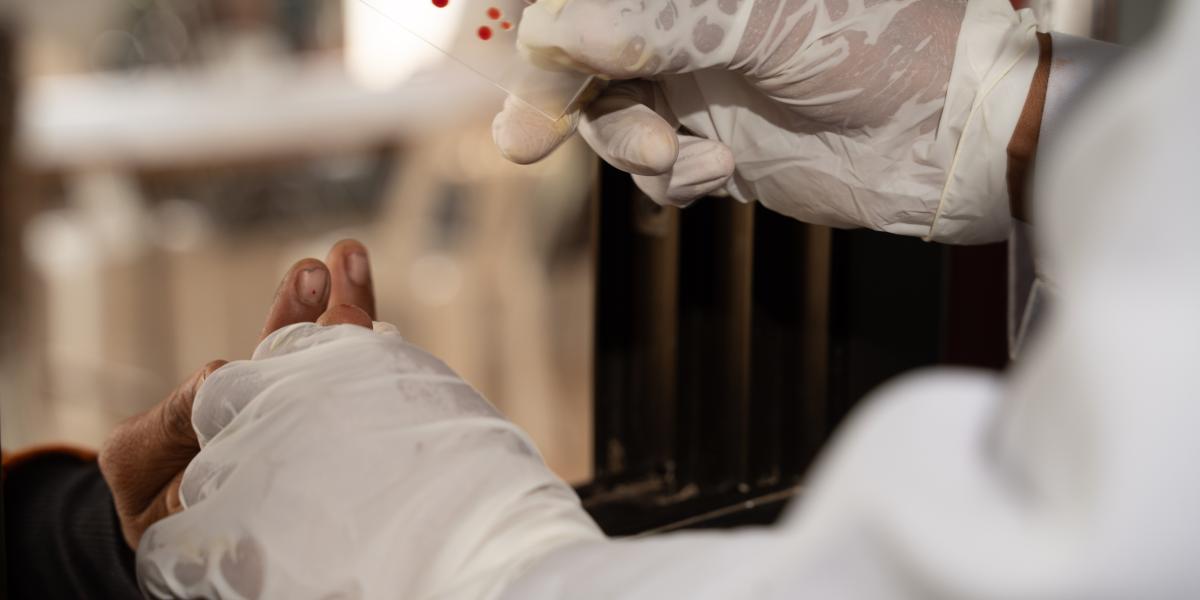
Positively - her efforts, and the efforts of healthcare workers and health educators, are paying off.
"People are now more aware of malaria and its dangers," Somphan says. "They have come to understand the seriousness of malaria and the importance of early diagnosis and proper treatment. They now recognize that avoiding hospitalization could lead to prolonged illness and greater disruption to their lives…they are more likely to seek medical attention, even for mild symptoms."
The increasing number of patients coming for testing – sometimes up to 40 per day – is a testament to increased capacity and awareness in the community. But, she notes – they more increasingly have quiet days – a reflection of progress towards eliminating the disease.
Importantly, this progress, and the enhancement of laboratory capability, has been the result of building a robust and skilled workforce. An essential ingredient, supported by USAID, has been training, evaluation and accreditation for these laboratory technicians.
In 2024, multiple teams of microscopists across 12 provinces and the Center of Malariology, Parasitology, and Entomology (CMPE) underwent rigorous national and external competency assessments – and secured strong results – with more than 18 receiving certifications at various levels.
Among these top performers is Soumon Vikhaelou, a 44-year-old mother of three and a laboratory technician at the Provincial Health Office of Luang Namtha.
With a passion inspired by a medical sciences scholarship, Soumon has dedicated her career to malaria control. Her responsibilities span from analyzing samples and reporting data to supporting laboratory operations and monitoring field activities.
"I feel delighted and proud to be a technical expert contributing to the elimination of malaria," Soumon said. She says the training and support have been invaluable, and is thrilled to have passed the assessment with high marks.

Her commitment to eliminating malaria is based on her first-hand understanding of its impact on communities. "Malaria often affects those living in rural areas where access to healthcare is limited," she explains. " Eliminating malaria will ensure that everyone, regardless of where they live, will be healthier and safe.”
The recent training and accreditation of these microscopists represent another positive milestone in Lao PDR's journey towards malaria elimination. By investing in the skills and knowledge of its frontline workers, the country is building a strong foundation for a malaria-free future.
